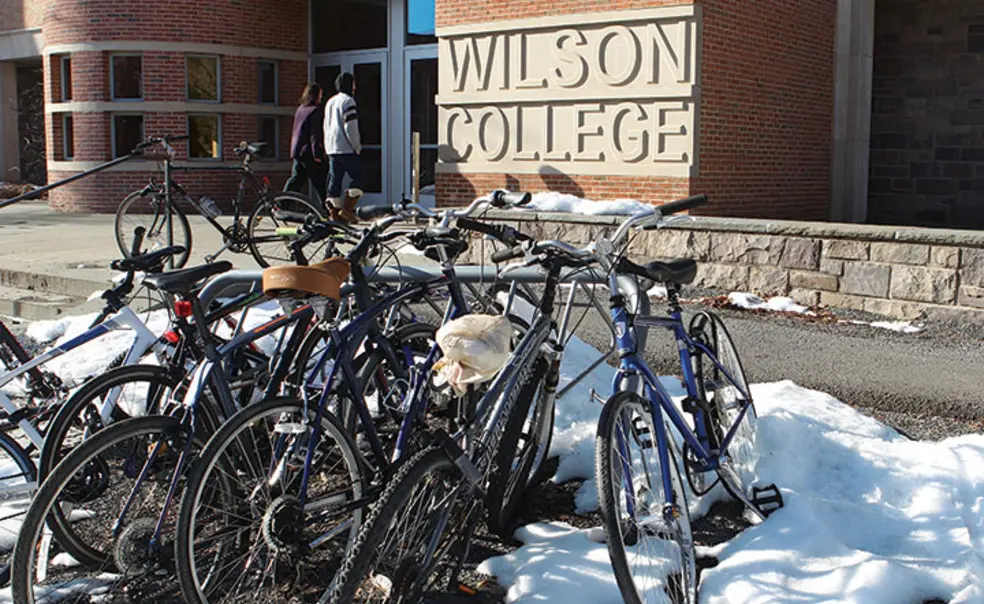Assessing a Legacy
Nine scholars offer their viewpoints as part of review of Wilson’s record
The University has released nine letters from scholars of Woodrow Wilson 1879 about the legacy of the former U.S. and Princeton president. The scholars were invited to contribute to the fact-gathering process of a special trustee committee considering whether the University should change how it recognizes Wilson, a demand of the Black Justice League (BJL), a student group, because of Wilson’s documented racism.
Contributors offered a range of viewpoints on Wilson’s legacy to the nation, to African Americans, and to Princeton University. Most did not take a clear position on the BJL’s demand that the names of buildings and programs honoring Wilson be changed. One who did was Paula J. Giddings, a professor of Africana studies at Smith College.
“In my opinion, [Wilson’s] segregationist and racially exclusive policies as president of Princeton University and as the 28th president of the United States are sufficient grounds for the refusal to honor his name in an institution that values diversity and the standards of a liberal arts education,” she wrote. Giddings asserted that Wilson believed racial control was needed for the nation to enjoy economic progress and progressive reforms; segregation was required for social peace. So rather than being at odds, Wilson’s progressivism and belief in racial control were “co-dependents,” she said.
“I would argue that policies that reflected such ideas were largely responsible for the country undergoing what was arguably the most violent period in American history during the years of his administration,” Giddings wrote, noting the race riots and mob violence that took place across the country in 1919, particularly in Northern cities where blacks and whites were competing for jobs. The consequences of that legacy can be seen in inner cities today, she continued.
Johns Hopkins University professor Nathan D.B. Connolly recalled how Wilson segregated the federal bureaucracy upon arriving in Washington in 1913: “In one especially dramatic example, some 300 black women employees in the Bureau of Printing and Engraving returned from a weekend in mid-November to find half of the women’s dressing room converted into a ‘Colored Only’ dining room. Integrated eating at the engraving bureau had apparently horrified first lady Ellen Axson Wilson during her tour of the facility.”
In determining how to memorialize Wilson, Connolly asserted, “we would do well to remember the ironies of American politics.” Though Franklin Roosevelt’s New Deal was segregationist, he noted, it advanced African Americans economically; though Lyndon Johnson was known for his use of racial epithets, he advanced civil rights. “And Woodrow Wilson, a segregationist and U.S. expansionist, made government increasingly responsible for protecting life, liberty, and property, even if his own limitations prevented him [from] democratically applying his vision,” Connolly wrote.
Duke University professor Adriane Lentz-Smith noted another irony: “When the president urged Congress to join the Great War as [a] fight for ‘rights and liberties’ and to construct ‘a universal dominion of right,’ that would ‘make the world itself at last free,’ African Americans heard something that resonated with their freedom dreams,” Lentz-Smith wrote. “Although the president never intended his calls for self-determination and a War for Democracy to apply to communities of color at home or abroad, Wilsonian rhetoric traveled places Wilson himself never would have dreamt of taking it.”
The other scholars who contributed letters are: College of William & Mary professor emeritus James Axtell, University of South Carolina professor Kendrick A. Clements, University of Wisconsin professor emeritus John Milton Cooper Jr. ’61, Stanford University professor David M. Kennedy, Southern Methodist University professor Thomas J. Knock *82, and University of Richmond professor Eric S. Yellin *07. (Axtell, Cooper, and Yellin were among the scholars interviewed for PAW’s story on Wilson’s legacy in the Feb. 3 issue.)
The trustee committee exploring how Princeton should commemorate Wilson had received more than 525 comments on its website by Feb. 3 (to add your views, go to wilsonlegacy.princeton.edu/join-conversation). In addition, the committee scheduled small-group meetings in January and February with members of the Princeton community.
The committee was formed in the wake of a 33-hour sit-in by BJL members in the office of President Christopher Eisgruber ’83 in November. Among the group’s demands relating to Princeton’s racial climate were the renaming of the Woodrow Wilson School and Wilson College and the removal of a mural of Wilson from Wilcox Hall.
For the full text of the letters from the nine historians and scholars, go to wilsonlegacy.princeton.edu/observations.












No responses yet